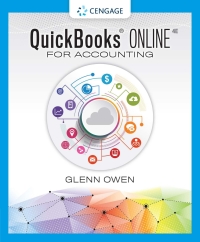Question
Response to this discussion: The article by Carliss Baldwin describes how the standard capital budgeting models deter innovations. In many industries, capital budgets are less
Response to this discussion:
The article by Carliss Baldwin describes how the standard capital budgeting models deter innovations. In many industries, capital budgets are less about updating old equipment and more about improving customer service, launching new products, securing corporate networks, and improving worker efficiency (Banham, 2017). The majority of U.S. Companies use net present value or internal rate of return in their formal capital budgeting decisions, but the problem with these models is that it does not recognize the value of a wide range of competitive commitments (Baldwin, 1991). Many projects are viewed as value-decreasing investments because it is thought that new innovations would cannibalize current product offerings in the short term, therefore managers push off innovations until a later date (Baldwin, 1991). This often times may not meet short term results, but would have been the best long term value maximizing decision. This idea leaves management postponing innovative tactics and allows room for competition to swoop in and bring a product to market first. Many managers are assessed against predetermined metrics and therefore chooses to keep a short-term focus on what makes them money today and looks for solutions to problems that are reliable and less defensible (Galveski, 2018). Traditional NPV or RONA might have been effective metrics once upon a time to determine the pay back of an investment, however in today's culture and business environment, things change at a much faster pace and we are relatively uncertain what might happen in the next five to ten years, therefore more external factors must be considered. Traditional models often review and support decisions that are sensible when viewed in isolation, instead of focusing on the interrelated set of decisions that can support innovation (Baldwin, 1991). Mark Partin, CFO at BlackLine states the cycle of innovation is so blisteringly fast that threats to data are so prolific that investment decisions need to be rapid; which includes decisions that help adapt to new products, rapid growth, and new threats (Bahnam, 2017). Having a consistent commitment to innovation has the potential to create extraordinary value over time (Baldwin, 2001).Some strategies to be developed by companies may include associating a certain percentage of business unit's profit to be derived from new products or even implementing relatively small, invisible investments over time (Baldwin, 2001). There is a level of fear of failure that keeps managers working towards innovation and investing in research and development, but taking small steps along the way can show pay offs down the line. Some CFO's have discovered some of the risker, hardest-to-measure investments can be the most transformative for a company (Bahnam, 2017).
Capital budgets are great in theory as it embodies an orderly function to organize costs and output of each activity within an organization, but if not careful it can strap the innovative culture of an organization. Capital allocation and effectively using capital to grow a business is key to developing a competitive advantage over competition. A capital budget process should be aligned with a company's strategy and carefully integrated into a company's corporate culture to support an agile innovative culture (Boquist, Milborn, & Thakor, 1998).
Baldwin, C. (1991). How Capital Budgeting Deters Innovation - Research Technology Management,34(6), 39-39.
Banham, R. (2017). The Best Path Forward.CFO.https://www.cfo.com/budgeting/2017/10/best-path-forward/
Boquist, J., Milbourn, T., & Thakor, A. (1998). How do you Win the Capital Allocation Game?MIT Sloan Management Review. Retrieved from:https://sloanreview.mit.edu/article/how-do-you-win-the-capital-allocation-game/
Galveski, S. (2018) Why trational metrics like npv irr and rona kill innovation. Retrieved from:https://www.steveglaveski.com/blog/why-traditional-metrics-like-npv-irr-and-rona-kill-innovation
Step by Step Solution
There are 3 Steps involved in it
Step: 1

Get Instant Access to Expert-Tailored Solutions
See step-by-step solutions with expert insights and AI powered tools for academic success
Step: 2

Step: 3

Ace Your Homework with AI
Get the answers you need in no time with our AI-driven, step-by-step assistance
Get Started


